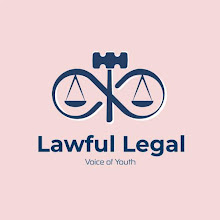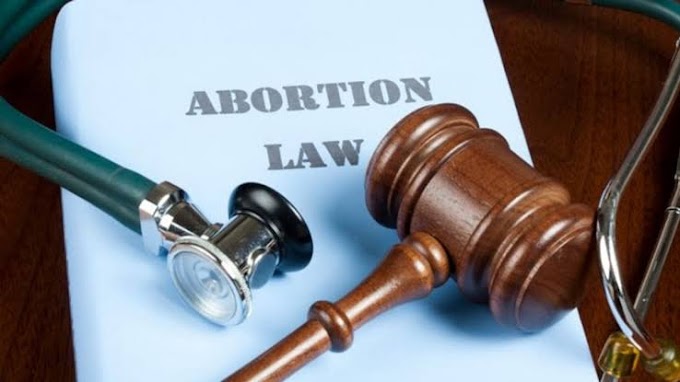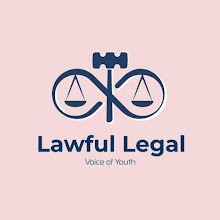"Empowering the Innocent: A Comprehensive Guide to the POCSO Act for Safeguarding Children from Sexual Offenses"
Table Of Content
01 | INTRODUCTION |
02 | What is POCSO Act, 2012 |
03 | Government Initiatives |
04 | General Principles |
05 | Trial Of Offences |
06 | Landmark Judicial Proceedings |
07 | Conclusion |
08 | References |
Introduction: -
POCSO (Protection of Children from Sexual Offences Act, 2012) is an act introduced by the Government of India. The POCSO Act was enforced on 14Th November’2012. And this act was passed under the Ministry of Women and Children Development. Ministry of Women and Children Development is an apex body under Government of India for the administration of rules and regulations in relations to the benefits and welfare of women and children development in India. Protection of Children from Sexual Offence Act, 2012 is read with Protection of Children from Sexual Offence Rule, 2020. The Parliament of India also passed a Protection of Children from Sexual Offences Bill, 2011 on 22nd May’ 2012. The Protection of Children from Sexual Offences Act is a Gender-Neutral Act for both Children and Accused.
What is POCSO Act, 2012?
POCSO Act stands for Protection of Children from Sexual Offences Act, 2012. POCSO Act encourages child sexual abuse an offence. The main aim of POCSO Act is to provide protection of children from Sexual Offences like Sexual Assault, Sexual Harassment, Child Pornography. POCSO aims to safeguard the interest of every single child from such kinds of offences. Under the Chapter VII of the Bare Act of the Protection of Children from Sexual Offences Act, 2012 there is a provision of setting up of Special Courts which exclusively deals with such kinds of offences such as Sexual Assault, Sexual Harassment, Child Pornography.
Protection of Children from Sexual Offences Act, 2012 Age Limit: - Under 18 Years
Protection of Children from Sexual Offences Act, 2012 Punishment: - Minimum of 10 Years
As Protection of Children from Sexual Offences Act, 2012 was introduced in year 2012. But what were the rules and regulations regarding such offences and what sort of remedies were available for the children of age below 18 years. So before POCSO Act there was an act that is Goa Children’s Act 2003 which use to deals with such kinds of sexual offences. Along with Goa Children’s Act, 2003, there were some more sections of India Penal Code 1860 which use to deal with child sexual abuse. These sections are: -
Section 377 of India Penal Code 1860: - Unnatural Offences
Section 375 of India Penal Code 1860: - Rape
Section 354 of India Penal Code 1860: - Outraging the modesty of a woman
However, these Sections of Indian Penal Code, 1860 had various loopholes like: -
Section 377 of India Penal Code 1860 does not define unnatural offences. And it does not focus on child sexual abuse.
Section 375 of India Penal Code 1860 does not protect male victims.
Section 354 of India Penal Code 1860 does not define the term ‘modesty’ and there is no provision in relation to protection of ‘modesty for a male child.’
Protection of Children from Sexual Offences Act,2012 is not complete act unless read with the provisions of The Code of Criminal Procedure, 1973, Indian Penal Code, 1860, Juvenile Justice Act and Information Technology Act, 2000.
Protection of Children from Sexual Offences Act,2012 contains 9 Chapters that tell us more about child sexual abuse. (Punishments, Offences and Procedure).
Section 3 deals with the issues related to “Penetrative Sexual Assault”.
Section 5 deals with the issues related to “Aggravated Penetrative Sexual Assault”.
Section 7 deals with the issues related to “Sexual Assault”.
Section 9 deals with the issues related to “Aggravated Sexual Assault”.
Section 11 deals with the issues related to “Sexual Harassment”.
Section 13 deals with the issues related to “Pornography”.
Punishments related to the above specified offences: -
Offences | Provisions (Sections) | Punishment |
Sexual Assault (Penetrative in nature on a child below 16 years of age) | Section 4 | Minimum of 20 years of imprisonment, which may be extended to the imprisonment for natural death, along with the fine as may be specified. |
Sexual Assault (Penetrative in nature on a child between the age group of 16 to 18 years of age) | Section 4 | Minimum of 10 years of imprisonment, which may be extended to the imprisonment for natural death, along with the fine as may be specified. |
Penetrative Sexual Assault (Aggravated in nature) | Section 6 | Minimum of 20 years of rigorous imprisonment, which may be extended to the life imprisonment, along with the fine as may be specified. |
Sexual Assault | Section 8 | Minimum of 3 years which may extend to 5 years of imprisonment, along with the fine as may be specified. |
Aggravated Sexual Assault | Section 10 | Minimum of 5 years which may extend to 7 years of imprisonment, along with the fine as may be specified. |
Sexual Harassment | Section 12 | Maximum of 3 years of imprisonment, along with the fine as may be specified. |
Use of a child for Pornography | Section 14(1) | For first conviction 5 years of imprisonment, however upon further conviction the imprisonment can go up to 7 years, along with the fine as may be specified. |
Use of a child for Pornography while committing an offence under Section 3 | Section 14(2) | Minimum of 10 years of imprisonment, which may be extended to the life imprisonment, along with the fine as may be specified |
Use of a child for Pornography while committing an offence under Section 5 | Section 14(3) | Rigorous life imprisonment, along with fine as may be specified. |
Use of a child for Pornography while committing an offence under Section 7 | Section 14(4) | Minimum of 6 years of imprisonment, which may be extended to 8 years of imprisonment, along with the fine as may be specified. |
Use of a child for Pornography while committing an offence under Section 9 | Section 14(5) | Minimum of 8 years of imprisonment, which may be extended to 10 years of imprisonment, along with the fine as may be specified. |
Storing of Pornographic material involving a child for commercial purpose | Section 15 | Maximum of 3 years of imprisonment, along with the fine as may be specified OR both. |
Some Government Initiatives in the context of POCSO Act,2012
POCSO E-Box, it is an online complaint management system for reporting of sexual offences against children.
National Commission for Protection of Child Rights, this commission ensures that all laws and all policies are working in favour of child rights.
Integrated Child Protection Scheme, this scheme aims at building a protective environment for children.
General principles defined under the Protection of Children from Sexual Offences Act of 2012: -
Right to be treated with dignity and compassion: As per the provisions of the POCSO Act, victims are to be treated with great care and sensitivity throughout the process.
Right to be heard and to express views and concerns: A child has the right to be heard for the parts that affect him/her.
Right to Life and survival: Any kind of psychological, physical, emotional, and mental harm should be kept away from the child in the best manner feasible.
Right to effective assistance: The process of legal proceedings can be harrowing for an individual in more than one way, which is why a lot of crimes go unreported because the mental and financial cost is often too high. This is why the act provides for legal, health, counsel, psychological and financial aspects.
Right to be informed: The legal proceedings should be clearly explained to the child victim or witness.
Right to compensation: Relief and rehabilitation of a child must be compensated for.
Interest of the child: The most significant part of the process is the development of the child in a holistic manner.
Right to Privacy: Cases can get very public, which is why the POCSO Act 2012 made it necessary that the identity and privacy of a child are protected at all times of the trial, pre- and post-trial.
Right to be protected from hardship during the justice process: There is a very real secondary victimization that occurs when a child is involved in the process of legal cases. This is to be minimized.
Trial of Offences Under Protection of Children from Sexual Offences,2012: -
The provisions of Section 33 to 38 deals with the procedure and powers of special courts and reporting of evidences.
Procedure and Power of Special Court: - Section 33 of the act deals with the facts that the special court may take cognizance of an offence, without the accused being committed to it for trial. Under Section 33 also allows special courts to take frequent breaks for the child during the trial. Also need to create a child friendly atmosphere. Under 33 special courts are obelized to secure the child’s identity. Special Courts also has the power under this section to direct accused for the compensation of payment as may be applicable in favour of children in case of any physical or mental trauma along with the punishment.
Procedure in case of commission of offence by child and determination of age by special court: - Under Section 34 of POCSO Act, if any offence is committed by a child, then such child shall be dealt with the provisions of Juvenile Justice (Care and Protection of children) Act,2000. Under Section 34, if there is any question related to the age of the child, then special court has the power to satisfy itself about the age and shall record it in writing.
Period for recording of evidence of child and disposal of case: - Under section 35, Special Court shall record the evidences within the period of 30 days. And, shall complete the trial within the period of 1 year.
Child not to see the accused at the time of testifying: - Under Section 36 special court shall ensure that the child is not exposed to the accused in any way during trial.
Trail to be conducted in camera: - Under 37 of POCSO Act, special court shall conduct the trail in camera and in presence of his/her parents or any other person as specified under the act.
Assistance of an Interpreter or expert while recording evidence of child: - If required, special court can take assistance of a translator or any other person as specified, after paying the specify fees while recording the evidence of the child.
Landmark Judicial Proceedings: -
In this case, the accused was convicted of committing sexual assault and the Calcutta High Court laid down some directives which are to be followed by the investigating agencies to protect the dignity of the child victim. Following are some of the important directions:
The police officer must register the FIR as per Section 19 of the POCSO Act. Also, they must inform the victim and their parents about their right to legal aid and representation.
After the registration of the FIR, the child should be immediately sent for medical examination under Section 27 of the POCSO Act. In case the child falls within the definition of ‘child in need of care and protection; as defined under Section 2(d) of the Juvenile Justice (Care and Protection of Children) Act, 2000, the child is to be forwarded to jurisdictional CWC.
The identity of the victim is not to be disclosed in any media.
Further, the Court issued some guidelines regarding the compensation to the victims. Some important points are as follows:
Compensation under Section 33(8) of the POCSO Act can be awarded by the Special Court at the interim stage.
The compensation at the interim stage is independent of compensation to be paid by the convict upon conviction.
The objective behind providing compensation is the relief and rehabilitation of the child victim and the reparation to the victim when the State has failed to protect the individual from crimes.
This case throws light upon the intricacies of the medical evidence of the victim. The Allahabad High Court in this case set aside the conviction of the accused under Sections 3 and 4 of the POCSO Act as there were no marks of injury on the body of the victim who was 14 years of old but the victim had stated that there was forcible sexual intercourse. The Court made the following observations in this case:
The injuries on the body are not always sine qua non for proving the offence of sexual assault but if the victim states that she has been helplessly raped then the marks of injury on the thighs, breasts, face, wrists, or any other part of the body can immensely support her statements.
The Courts should always take into consideration the fact that false charges of rape or sexual assault are common and the parents in order to take revenge convince their minor daughters to tell lies and concoct stories.
This is an important judicial pronouncement where the father of the minor rape victim filed a petition under Article 226 of the Constitution of India, 1950 to get permission to terminate her pregnancy. The Madhya Pradesh High Court paid emphasis on the report according to which the length of the pregnancy was 20 weeks. Following directives were issued by the High Court in this regard:
In the case of a minor, the consent of the petitioner is enough for the termination of pregnancy and it is not essential to obtain the consent of the minor victim.
The right to termination of pregnancy flows from Article 21 of the Indian Constitution.
A committee constituted of 3 registered medical practitioners must form an opinion regarding the termination of pregnancy in accordance with the Medical Termination of Pregnancy Act, 1971.
If the Committee gives permission to terminate the pregnancy, then all the services and assistance are to be provided to the victim by the Respondent i.e., State.
In case of termination of the pregnancy, the DNA sample of the foetus is to be kept in a sealed cover in accordance with the procedure.
Though there are some of the outcomes of Protection of Children from Sexual Offences Act, 2012, such as:
Low conviction rates: One of the major criticisms of the POCSO Act is the low conviction rates for sexual offenses against children. This can be attributed to various factors such as lengthy legal processes, inadequate investigation techniques, and the need for strong evidence to prove the offense. As a result, many perpetrators go unpunished, which undermines the purpose of the legislation.
Delayed justice: The POCSO Act places emphasis on the protection of child victims and their speedy trial. However, the judicial system in India is known for its backlog of cases, leading to significant delays in the disposal of case related to child sexual abuse. This delay not only causes additional trauma to the victims but also hampers the effectiveness of the Act.
Lack of awareness and sensitization: Despite efforts to create awareness about the POCSO Act, there remains a lack of awareness among the general public, including parents, children, and even law enforcement agencies. This lack of awareness often results in underreporting of cases and inadequate response to incidents of child sexual abuse. Additionally, the lack of sensitization among law enforcement officials can lead to improper handling of cases and insensitivity towards child victims.
Inadequate support mechanisms: While the POCSO Act provides for the establishment of Special Courts and the appointment of Special Public Prosecutors to ensure a child-friendly trial, there is a need for more comprehensive support mechanisms for child victims. This includes access to counselling, rehabilitation services, and other forms of assistance to help them cope with the trauma they have experienced.
Focus on penetrative offenses: The POCSO Act primarily focuses on cases of penetrative sexual offenses against children, often neglecting other forms of abuse such as non-penetrative sexual assault, child pornography, and online abuse. The narrow definition of offenses limits the scope of the Act, leaving certain types of abuse inadequately addressed.
Conclusion: -
The Protection of Children from Sexual Offences Act, 2012 is a significant step towards safeguarding the rights and dignity of children in India. By addressing the specific challenges posed by child sexual abuse, the Act seeks to create a safer environment for children and ensure their holistic well-being. It emphasizes the need for a child-centric approach, with the child's best interests and protection as the primary considerations throughout the legal process. While there is still work to be done in terms of raising awareness, strengthening implementation, and addressing the root causes of child sexual abuse, the POCSO Act represents a significant milestone in the protection of children from sexual offenses in India. The POCSO Act, 2012, is a critical piece of legislation that has been instrumental in providing legal protection to children from sexual offenses. It has laid the foundation for a comprehensive framework to address the issue and has played a significant role in raising awareness and sensitizing society about child rights and protection. To enhance the Act's effectiveness, it is crucial to strengthen implementation mechanisms, improve reporting mechanisms, and ensure timely disposal of cases. Continuous efforts should be made to create a supportive environment for child victims, enabling their recovery and rehabilitation. Additionally, ongoing awareness campaigns, training programs, and community engagement initiatives are necessary to prevent child sexual abuse and create a safer environment for children to grow and thrive. By upholding the principles and provisions of the POCSO Act, we can collectively work towards safeguarding the innocence and well-being of children, ensuring a brighter and safer future for them.
References: -
https://wcd.nic.in/sites/default/files/POCSO%20Act%2C%202012.pdf
https://blog.ipleaders.in/pocso-act-everything-you-need-to-know/
**Author:- Samar Singh, a Student of Bihar Institute of Law




![Freedom of Speech in India [Indian Supreme court and Law of Sedition]](https://blogger.googleusercontent.com/img/a/AVvXsEiGLLUmLKq5Da6xDZplasOZHKRj-jOhWPkoeuy0_Eq757tUpOiHz-xooXwIlAjF0-hmBfi-TtMIv6on_sVgBXVq4wbWwnbsqLOcNX22S8C2aSq-ZuK3vn9wWAx8tXByYOBfwc0hs6b8RJV84YNFG2greouGKjup6g8kN-xVlchW33VHdSSmrhLC1BUEVbGp=w680)





